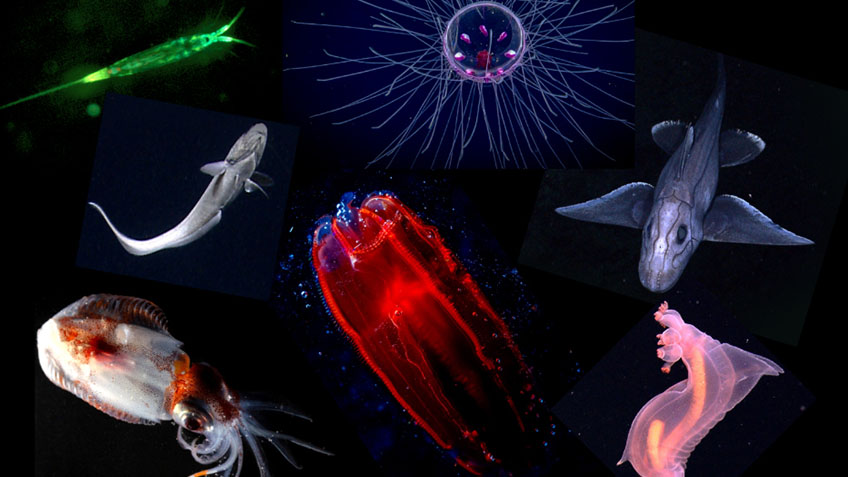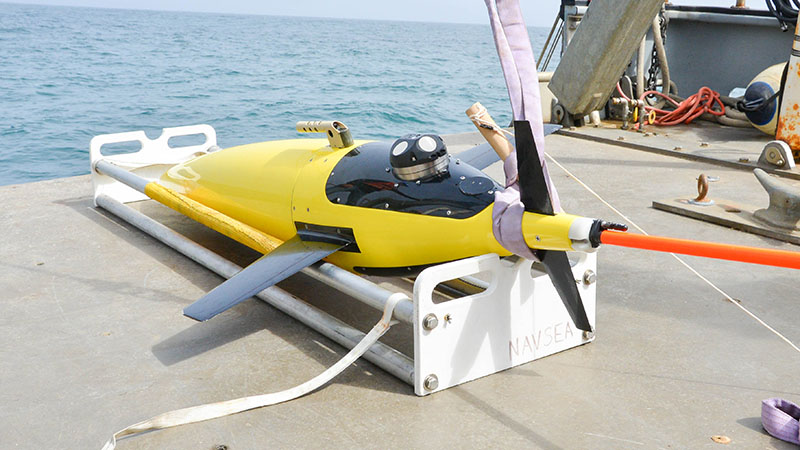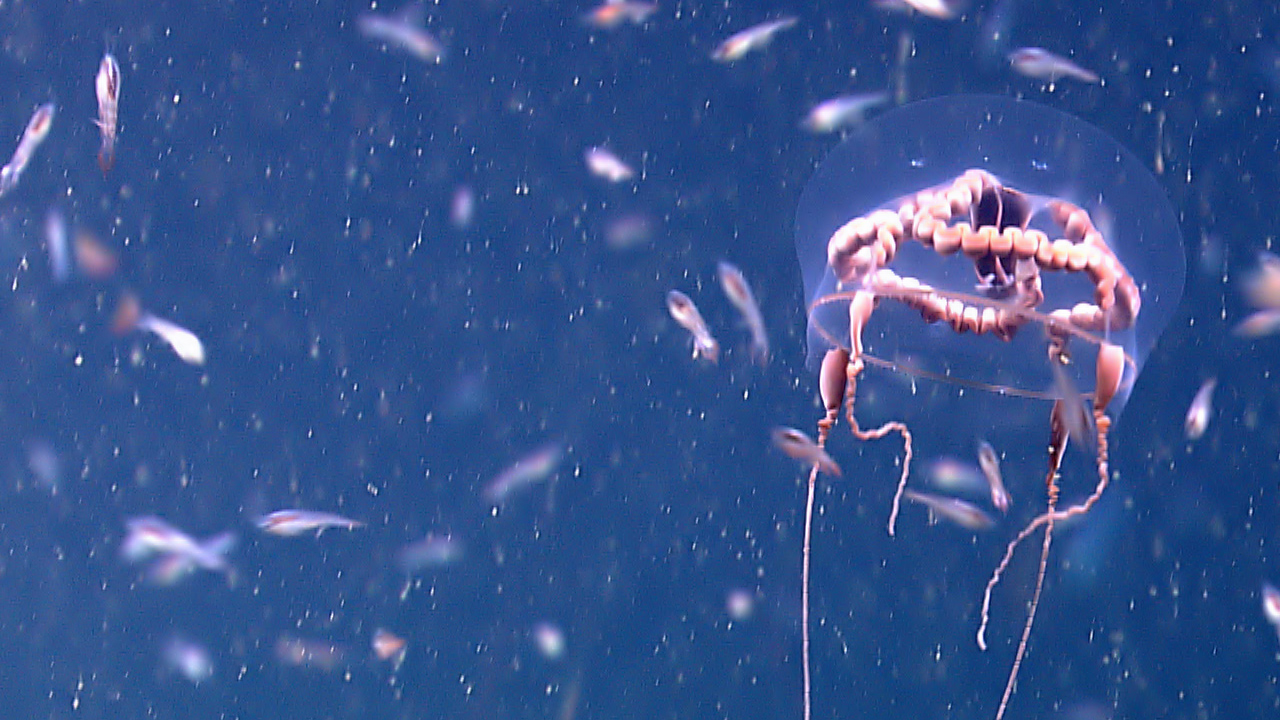What is the deep scattering layer?
The deep scattering layer (or DSL) is a region in the water column where there is a high density of marine organisms that reflect sound.
During World War II, technicians using the then newly invented sonar system made a puzzling discovery: the seafloor seemed to be much shallower than expected, and its depth changed during the night! This discovery was puzzling at first — how could there be a second seafloor floating a few hundred meters below the ocean’s surface? As it turns out, what they were observing wasn’t the seafloor at all, but a phenomenon known as the deep scattering layer (DSL).
Sound-based mapping systems (such as sonar) measure objects in the water by sending sound pings down into the ocean. When the sound hits an obstacle or the seafloor, the sound waves are then reflected back towards the receiver. A receiver can then measure how long it took for the sound to return to it, estimating depth based on this amount of time.
The DSL is an area of high concentration of marine organisms that live suspended in the water column. Many of these organisms, such as fish, have swim bladders that can reflect sound. These swim bladders can reflect the sound so strongly that a “false bottom” effect can be created. When early sonar operators thought they were seeing the seafloor, they were actually seeing a thick layer of fish, squid, jellyfish, and other marine organisms. This layer is typically seen around 300-500 meters (984-1,640 feet) and can be deeper during the day and portions of the layer can get shallower at night. DSLs can be seen in ocean basins all over the world and serve important ecological roles in the open ocean.

This echogram shows what the deep scattering layer (DSL) looks like from an acoustic perspective, taken during a remotely operated vehicle (ROV) dive on the Windows to the Deep 2019 expedition. The red tracks are the ROV path and the layer of blue and green colors is the DSL. Warmer colors in the DSL represent a stronger return of sound which in some cases indicates a higher concentration of marine life. Image courtesy of NOAA Ocean Exploration. Download largest version image (jpg, 584 KB).
So why did the “seafloor” appear to change depths throughout the day? Many of the organisms that make up the DSL exhibit a behavior known as diel vertical migration. In short, some ocean animals move upwards towards shallower water at night and downwards to deeper water during the day. This has a lot to do with how light travels through the ocean. During the day, it’s safer to hide in deeper, darker water, away from predators. But at night, the animals in the DSL can move to shallower waters to eat. Photosynthetic plankton need to stay near the surface in order to create energy from the sun, so shallower waters can be rich in food. Planktivores (organisms that eat plankton) will migrate upwards in the water to take advantage of this, and the animals that eat the planktivores will follow. This leads to the upward movement of some of the DSL. At dawn the entire process reverses - and the organisms migrate deeper — until the next night, when the sun sets again.

Midwater organisms that may be found in the deep scattering layer (DSL). Left: an iridescent copepod, the underbelly of a fish, and a squid. Middle: a jellyfish and a ctenophore. Right: a rabbit fish and a pelagic sea cucumber. Images courtesy of NOAA Ocean Exploration. Download largest version image (jpg, 407 KB).
The DSL is an extremely important part of life in the oceans. Most of the animals that live in the open ocean are concentrated here, forming an important part of the food chain. Even predators such as whales, dolphins, or sharks will dive down and forage in the DSL. Organic material called “marine snow” also falls from this layer, delivering vital nutrients to animals living on the seafloor. Humans also rely on the DSL, as many of the fish that we eat live in the water column and can get their food in this layer. If this phenomenon were to disappear, it would negatively impact multiple ecosystems and their food chains. That’s why it’s so important that we continue to study the DSL and learn how best to conserve it.
Published August 9, 2022
By Isabel Moyer, NOAA Ocean Exploration Hollings Scholar
Related Expedition: Voyage to the Ridge 2022



